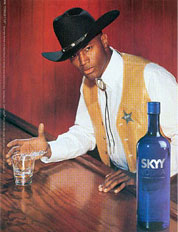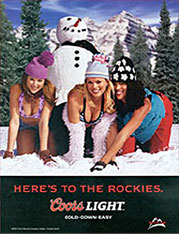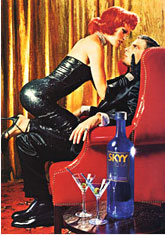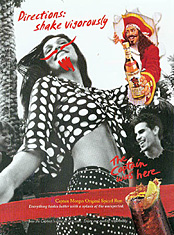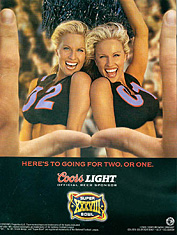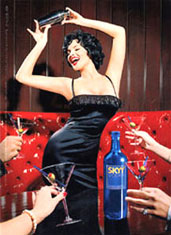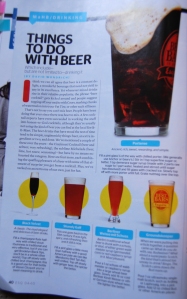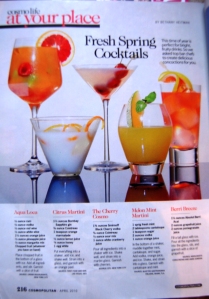You are currently browsing the category archive for the ‘Print’ category.
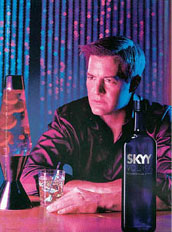
The Strong Silent Type focuses on “being in charge, acting decisively, containing emotion, and succeeding with women.” This stereotype reinforces the assumption that men and boys should always be in control, and that talking about one’s feelings is a sign of weakness.

The Jock is always willing to “compromise his own long-term health; he must fight other men when necessary; he must avoid being soft; and he must be aggressive.” By demonstrating his power and strength, the jock wins the approval of other men and the adoration of women.
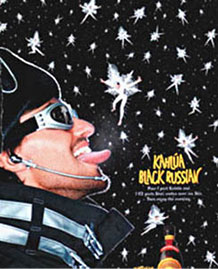
The Joker is a very popular character with boys, perhaps because laughter is part of their own “mask of masculinity.” A potentially negative consequence of this stereotype is the assumption that boys and men should not be serious or emotional. However, reseearchers have also argued that humorous roles can be used to expand definitions of masculinity.
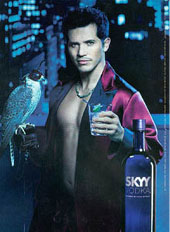
The Big Shot is defined by his professional status. He is the “epitome of success, embodying the characteristics and acquiring the possessions that society deems valuable.” This stereotype suggests that a real man must be economically powerful and socially successful.
The Action Hero is “strong, but not necessarily silent. He is often angry. Above all, he is aggressive in the extreme and, increasingly over the past several decades, he engages in violent behavior.”
The Sexpot/Bimbo is the sexualized “girl.” Flirty, giggly and jiggly, this stereotype is young, usually blonde, and non-threatening.
The Man Eater is the sexually aggressive female. She has a harder edge than the sexpot and is usually a bit older. Glamorous rather than pretty, she gets what she wants from men by using her sexuality.
The Rebel asserts her independence by being a bit wild, in a cute and sexy way. Unlike her male counterpart, the action hero, female rebels are not portrayed as being angry or aggressive. Instead, they achieve liberation through drinking, smoking and partying.
The Prize is that “perfect woman” who can be yours if you consume the right beverage. Pretty, but not giggly, the prize smiles provocatively or remains emotionally aloof. This type of woman is more commonly portrayed in TV commercials in which there is time to develop a plot to explain how she is “won.”
After viewing a vast array of alcohols in advertising, I noticed one missing from the crowd: wine. Which caused me to look back and realize that, throughout my life, I cannot recall one specific wine advertisement. Yet wine takes up several aisles in supermarkets and proves popular with the public. With such a strong following, why do wines not take advantage of advertising?
Though wine is not advertised directly in advertisements, I saw its appearance throughout magazines and television. What I observed is that wine is usually associated with romance, appearing as the beverage when couples drink together.

Couples drinking wine together at dinner. Article in Cosmopolitan April 2010.

Wine Cooler advertised for "Bridal Registry" in Cosmopolitan April 2010. This affirms wine being popular with couples (wedding gift) and with females specifically (featured in a women's magazine).
Wine seems to be more accepted among the female population. However, in media, it is also featured with high-brow males. A prime example is in the popular show Frasier.

Article in Esquire April 2010 pictures Tina Fey with a bottle of wine, showing how it is a popular drink with females.
Frasier, his brother Niles, and men are part of “The Corkmasters”, a wine club. Additionally, Frasier plans to host a radio show about wine to fellow enthusiasts. Shown in the first 3:30 minutes.
However, after a long search, I was able to find a wine advertisement:

Kendall-Jackson Chardonnay ad: Esquire April 2010
Surprisingly, the ad was featured in Esquire, a men’s magazine. However, like Frasier, the ad seems to target a more high-brow male audience. The ad features a lot of text and information, categorizing it as one of “The Rationalistic Image” which “is reflected both by practitioners of reason-why advertising and by rationalistic academic psychology…” (Leiss,Kline, Jhally, Botterill 151-55). Hence, the consumer is more knowledgeable and, therefore, more sophisticated.
Hence, wine proves to be popular among both genders and often brings them together, especially in romantic situations. However, when the gender markets are separated, a divide surfaces. Wine is more accepted among females, where a woman can drink wine at any occasion and even by herself (as seen in the image with Tina Fey). Males that enjoy wine, though, must be of a higher social-status and better-educated. This could have a positive connotation, where these refined men are respected. However, negativity may also occur; well-mannered men tend to be well-groomed and, therefore, effeminate. Furthermore, this may be enhanced by their drinking of wine, a popular women’s drink.
-SG
As aforementioned in the post regarding the articles in the April 2010 issues of Esquire and Cosmopolitan magazines, fruity drinks correlate to a female audience while bitter drinks and beer are catered to men. This trend is also apparent throughout the advertisements in said magazines, as well as others.
The most frequent alcohol ad to appear in women’s magazines were for “fruity” hard liquor drinks.

Glamour May 2010

Cosmopolitan April 2010
As stated by Killing Us Softly 3 (see previous post) women are constantly portrayed as thin in advertisements. It is likely that this causes the female audience, bombarded with these images, to be diet-crazy. Hence, many women may follow a diet full of vegetables and fruit aka: “healthy foods”.
This showcases semiotics where the the ads’ captions about being “all natural” or a “mix of berries” serve as the “signifier” and the “signified” are the alcoholic drinks themselves. The two entities together send the faux message of a “healthy drink” (Leiss, Kline, Jhally, Botterill 164-65). This idea of “health” is further enhanced by the “Go Natural” caption on the SKYY ad and the text included in the Absolut advertisement.

Caption under Absolut Vodka "Berry Acai" Ad
Blueberries and pomegranates are veteran “super foods”, found on almost every list, and the “acai” berry is the newest addition. To the consumer, this drink seems to provide a “triple threat” of “super-healthy” food and qualities. However, this is not an ingredients list, but merely what flavors the alcohol contains. Ironically, this flavor is obtained through sugary syrups and chemicals… the opposite of “healthy”.
Hard liquors are also advertised to men:

Maxim May 2010

Esquire April 2010

GQ May 2010
However, unlike with the females, most of the liquors advertised to men do not contain additional flavors but remain as the pure liquor. The “fruity drink” ads that do appear either show sexual images of women or ideas of toughness, as the previous post explains.
As a college student, I also observe men relate thirty drinks as “weak” and regular hard liquors as a way to prove “toughness”. This, too, relates to the video Tough Guise, discussed in the previous post. I also view this incident as a way to portray men as “keeping it simple”, which was stated in the Esquire article explaining their love for beer.

Esquire April 2010 article explains men being highly esteemed the male population. Also, men do not like "silliness" such as fruits added to their beer, and prefer to "be simle, ungimicky".
However, some beer ads seem catered to women:

Select 55 ad in Cosmopolitan April 2010
As with the fruity drinks, this beer ad serves the “diet-crazed” woman, guaranteeing that this beer is low in calories and therefore healthy/safe to drink.
Overall, advertising gears sweet, fruity, and seemingly-healthy drinks towards women, whereas present simple and strong or bitter beverages towards men.
-SG
Currently in my Media Studies class we are learning about stereotypes in the media. For our screening last week, we were presented two documentaries on this issue: Killing Us Softly 3 (imdb) and Tough Guise (imdb). I thought I could apply some of the ideas presented in these documentaries to our discussion on how genders are presented in advertising, specifically of alcohol.
Killing Us Softly 3 focuses on the portrayal of women in advertising. Lecturer Jean Kilbourne begins by explaining the prominence of advertising, something we have discussed heavily in class, and its influence on the consumer culture. She primarily speaks of how advertising illustrates women with unrealistic ideals of beauty, forcing females to consume in products in order to achieve beauty and, therefore, happiness. “…from the economic necesity to create demand…arose advertising’s power to induce false needs in people” (Leiss, Kline, Jhally, Botterill 83). Additionally, she describes how, in ads, women are seen as “objects”- sometimes literally.
At first, I figured by watching this video, I would see how this movie connects to the advertising in women’s magazines. However, it seems more fitting for the advertisement in men’s magazines, especially the latter. And it makes sense: females that read women’s magazines are looking for ways to improve themselves, and therefore don’t want to see themselves as inferior “objects”. However, these images of submissive women usually display sexual undertones, and hence appeal to a male audience.

Maxim May 2010: Issue 149
Kilbourne references alcohol advertisements specifically during the film, as well, with other ads.

Further examples can be found here.
Tough Guise serves as a foil to Killing Us Softly 3 in that it discusses the male stereotypes in advertising. Narrator Jackson Katz explains how men are portrayed as dominant, strong, powerful, and sometimes violent characters in media. Though this may be true in movies and music, it is rare in advertising, for as aforementioned advertising usually tried to sell “happiness”, such as follows:

Heineken ad illustrates fun and friendship in Enquire April 2010 Issue
However, one advertisement for Bacardi found in a male magazine did display violent traits:

Bacardi Ad in Enquire April 2010 Issue
Though the ad promotes a “fruity drink”, something predominately geared towards females, it showcases a dangerous “thorny bush”, hence a challenge for men to conquer.
Hence, controversies dealing with advertising’s stereotypes towards different genders can be supported by advertisements for alcohol.
-SG
After picking up the April issues of Cosmopolitan and Esquire, we searched for the differences in alcohol advertisements between the two magazines. Each geared toward a specific gender audience, we noticed the similarities and differences in the advertisements in each magazine. For example Cosmopolitan offered drink recipes for its readers that all involved fruit. But in the Esquire issue, there is a similar article about mixed drinks, but with beer.
KC

